3 Benefits of Mugwort — A Magical Herb of the Moon Goddess

by Corinna Wood
Curious to understand the benefits of mugwort? She is certainly an herb shrouded in mystery and misinformation.
Hang on . . . what is mugwort?
Ah yes. For starters, let me share a little story.
Each spring, I like to visit a gardener friend of mine whose neatly tended beds are her pride and joy. She’s rather traditional, preferring a very structured, mannered approach—while I tend to be more of a wild child, but anyone who loves green, growing things is a kindred spirit.
We’ve spent many pleasant afternoons together amid the flora trading tips between her traditions and my wild child folk approach.
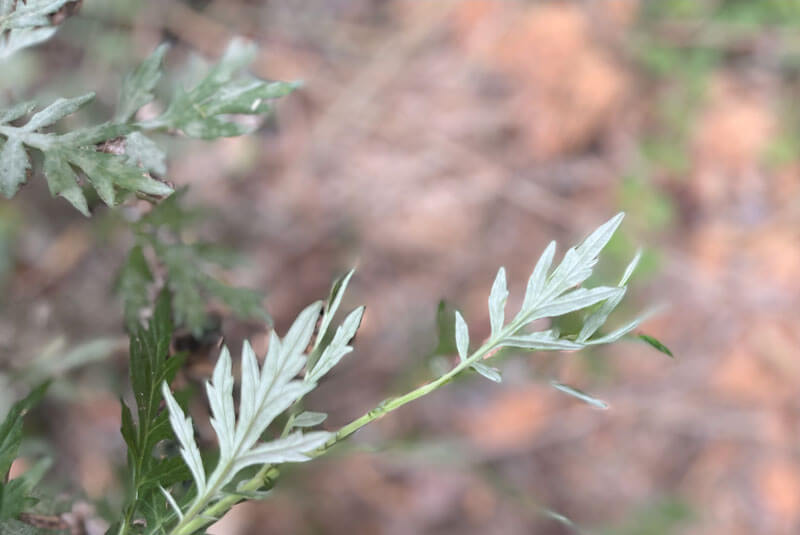 As we wandered about her land enjoying the early blooms, she lamented over a rather ubiquitous weed that was peeking up at the edges of her footpaths and all around her greenhouse.
As we wandered about her land enjoying the early blooms, she lamented over a rather ubiquitous weed that was peeking up at the edges of her footpaths and all around her greenhouse.
Now, I have long believed that most “weeds” are simply misunderstood herbal allies, so I asked her to point out the culprit.
Sure enough, it was mugwort. I had to smile.
“This,” I told her, “is not just a weed."
"This is the stuff that dreams are made of! Just wait ‘til you hear about the benefits of mugwort . . . ”
Table of contents
- So, what is mugwort? And who is Artemisia vulgaris?
- 3 mugwort benefits for you to explore
- Mugwort benefits shine in the mystical and magical realms
So, what is mugwort? And who is Artemisia vulgaris?
Mugwort is an aromatic flowering plant that belongs to the daisy family, Asteraceae. Though not native to North America, mugwort grows abundantly here.
Known to herbalists as Artemisia vulgaris (sometimes misspelled as Artemesia vulgaris), mugwort is named after the lunar goddess, Artemis, and, like the moon, invites us to travel with her from the material world into the magical.
It is crucial to positively identify mugwort
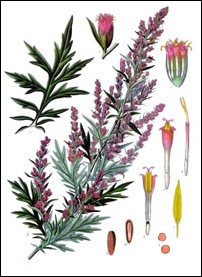 Over the growing season, this unassuming, leafy beauty will transition from a plant that nurtures our bodies into one that feeds our souls.
Over the growing season, this unassuming, leafy beauty will transition from a plant that nurtures our bodies into one that feeds our souls.
A feathery perennial, her deeply divided, pinnate leaves are glazed on the underside with the signature, silvery sheen, evocative of the silver light of the moon. Those leaves, when crushed, emit a pungent, distinctive aroma reminiscent of chrysanthemums and sage.
Blooms appear around the end of summer and are displayed in a raceme, a cone of small, inconspicuous, daisy-like blossoms.
While her leaves are similar to those of poison hemlock (Conium maculatum), it's easy to distinguish mugwort from her more noxious counterpart by her moonlike glow and, during flowering, by hemlock’s umbrella-shaped flowering structure.
Whenever using wild plants with deeply divided leaves (like parsley or carrot tops), it is crucial to be positive about the identification.
When in doubt, watch it through its entire growing season to observe the flowering structure, or consult someone who knows.
Once you're positive of the identification, the tiny young mugwort sprouts are quite edible and tasty, with a lovely, aromatic quality.
Gather the tender shoots in early spring, until they reach a height of about four inches, to toss in your fresh green salads. A little chopped mugwort also makes a delicious addition to deviled eggs.
As you know, it's essential to positively identify any plants you're harvesting for food or medicine. First things first: Grab my free guide on 3 Poisonous Plants to Watch Out For (pdf) so you can stay safe on your herbal adventures.
3 mugwort benefits for you to explore
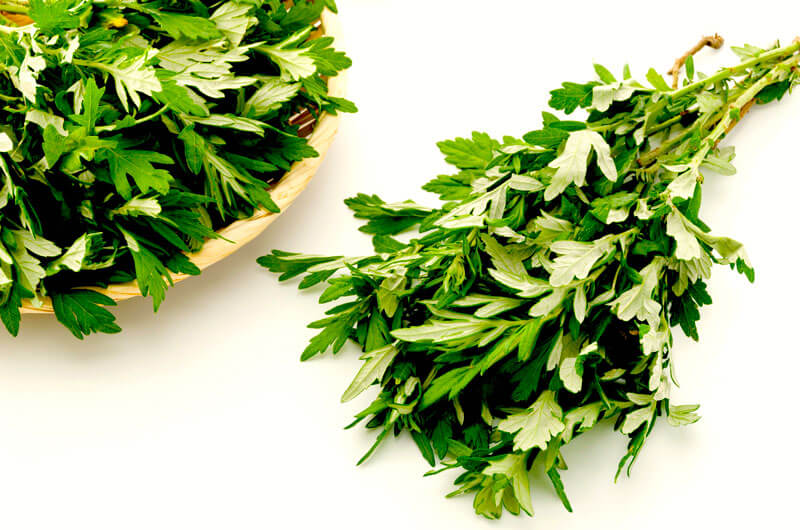 In my personal herbal practice, the benefits of mugwort are more energetic and magical than physical.
In my personal herbal practice, the benefits of mugwort are more energetic and magical than physical.
Since ingesting mugwort is somewhat toxic once she grows beyond one foot tall, I recommend drying mugwort and using it in dream pillows and herb bundles.
However, it is possible to withdraw nutritional benefits from mugwort in the early spring. When the plant is 6" to a foot tall, I don’t consume it directly, but you can utilize it to make a fortifying herbal vinegar.
Wanna know my favorite benefit of mugwort? To make your dreams more vivid and more memorable!
Once mugwort’s stems exceed a foot, she begins her transition into the realm of the metaphysical. Mugwort (Artemisia vulgaris) is closely related to desert sage (Artemesia tridentata), often burned as smudge, an energetic cleanser to prepare a sacred space for ritual, and to wormwood (Artemesia absinthium), which is distilled into the narcotic liquor, absinthe.
Vincent van Gogh is said to have had quite a thirst for absinthe, and it has been suggested that its long-term use may have contributed not only to his magnificent creativity, but also to his madness.
So it is wise to approach this plant with respect for its magic and caution for its slightly toxic properties, which increase as mugwort grows and flowers.
In its early flowering stage, the herb is at the peak of her mystical potency and can be harvested for smudge sticks and dream pillows.
Local mugwort is an excellent alternative to the sage imported from the west, and may indeed be a better choice for centering, clearing and grounding, since it incorporates the resident spirit of our home soil—and speaks to our roots.
Some wise woman herbalists prefer to reap mugwort near the full moon, when the plant is photosynthesizing at night as well as during daylight hours and the energies are concentrated in the above ground portions.
Mugwort grows well over four feet high, so choose only the most vibrant upper parts, leaving the dry, lower one to two feet.
Let's dive into the nitty-gritty how-to for each of those three preparation methods.
1) Making mugwort vinegar—a mineral rich tonic
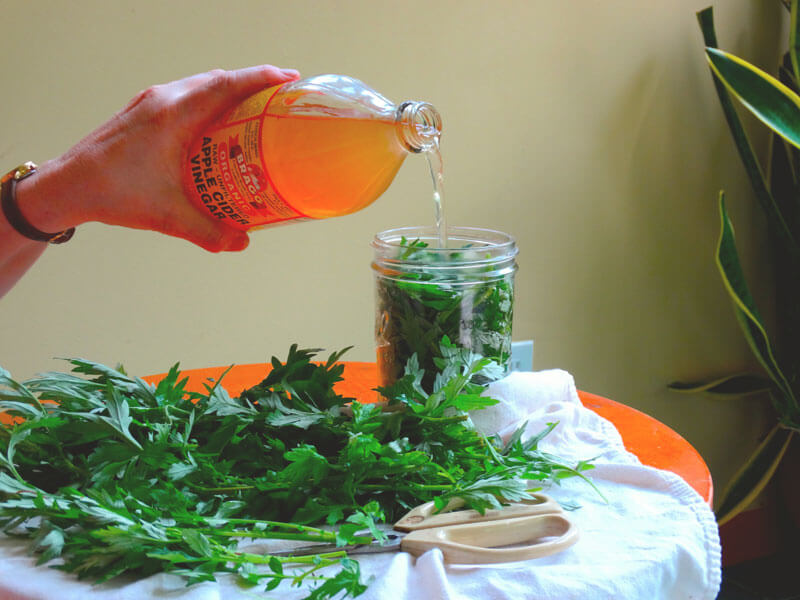 Mugwort is rich in calcium, as well as the magnesium necessary for our bodies to absorb calcium's benefits.
Mugwort is rich in calcium, as well as the magnesium necessary for our bodies to absorb calcium's benefits.
I like to combine mugwort with nettle and chickweed for my “strong bones” vinegar (actually, you can make your own delicious and nutritious “strong bones” vinegar from any one of those plants!).
Vinegar is an excellent menstruum, or medium, for drawing out the minerals that abound in mugwort. Best of all, herbal vinegars are easy to make!
To make your vinegar, remember to only use or harvest mugwort that is no taller than one foot. Just follow these easy steps:
- Tightly pack a jar full of plant material
- Fill the jar to the top with raw, organic apple cider vinegar
- Cap the jar with a plastic lid to prevent rust (If you don’t have a plastic lid, you can use wax paper or plastic wrap)
- Top of the liquid level as needed—The plants will usually absorb enough liquid overnight to end up uncovered, so keep an eye on it the first day or two
- Label the jar with the ingredients and the preparation date
- Let it brew for six weeks out of direct sunlight
- After six weeks, strain the plant material and enjoy
2) Making smudge sticks with mugwort
 Create bundles of three stalks and bind the ends with cotton string.
Create bundles of three stalks and bind the ends with cotton string.
If you're fashioning smudge sticks, you may want to wrap the entire bunch crosswise on the diagonal while the plant is still flexible to avoid the crumbling that occurs after drying.
Hang your bundles away from direct sun, or dry them in the oven using only the pilot light, until the thickest part of the stalk is easily snapped.
Your vehicle can also be utilized as a solar dehydrator! Just make certain to shade the southern side so the plant material isn't in direct sunlight.
3) Making dream pillows with mugwort
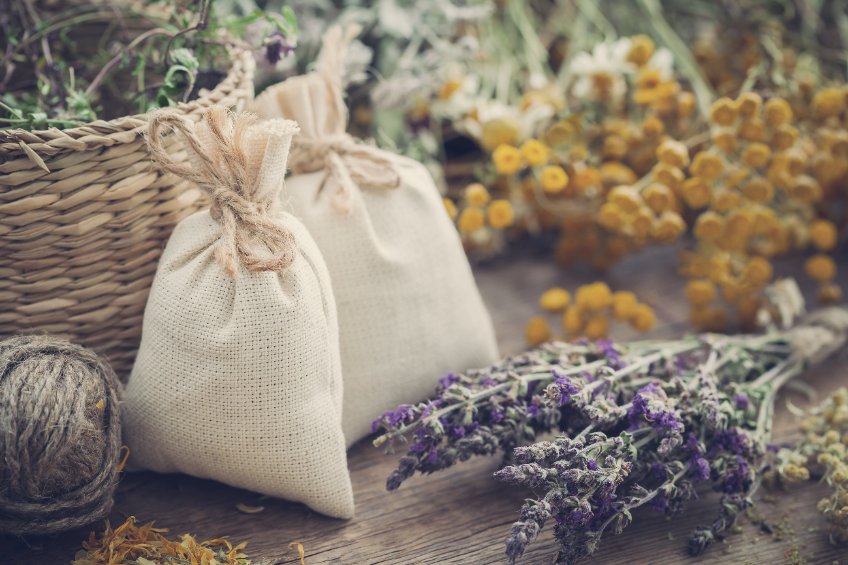 Mugwort stimulates the creative centers of the brain and is the base of almost all dream pillows. Yours can be as simple as stuffing an old sock or as elaborate as a finely embroidered, silk coverlet.
Mugwort stimulates the creative centers of the brain and is the base of almost all dream pillows. Yours can be as simple as stuffing an old sock or as elaborate as a finely embroidered, silk coverlet.
While mugwort alone is quite effective, you may also choose to add lavender to aid in relaxation—or some other favorite fragrant herb.
To make your dream pillow, just follow these steps:
- Harvest mugwort when the plant is over a foot high, ideally in the early to mid-flowering stage in late summer.
- Strip the leaves and flowers from the dried stalk
- Scoop your dried herbs into your bag (or old sock!), and secure
- Place in a creation of your making or simply beside/underneath your pillow
Cuddle up with your pillow to encourage more vivid, memorable dreams and to help you to access the intuitive guidance that they contain.
For several years, mugwort aided me in the process of tapping into my subconscious and keeping dream journals (until I decided that my dreams had become vivid and memorable enough, thank you very much!)
Of course, there is no guarantee as to the nature of your dreams. A friend of mine once told me that every time her boyfriend slept over, she would find her dream pillow tossed out of the bed when she arose in the morning!
Mugwort benefits shine in the mystical and magical realms
In holistic healing, acupuncturists burn dried mugwort as moxa on acupuncture points of the body as an alternative to needles. Moxa is known in Chinese medicine to strengthen the blood, stimulate the flow of chi, and maintain general health, making this extraordinary plant beloved of healers and seers alike.
 As for my gardener friend, she isn’t a total convert.
As for my gardener friend, she isn’t a total convert.
She has cleared the mugwort from around most of her prized flowerbeds, but, happily, the stand near her greenhouse remains.
She’s also been working on a lovely little needlepoint “sachet” for mugwort.
As a sister of the plants who loves green and growing things, I think you'll enjoy exploring one or more of these three ways to receive the benefits of mugwort.
May her mysteries be unveiled as you connect with this magical plant. In whatever form mugwort enters your life, may she bring you strong health and sweet dreams.
And remember, wild plants make wild women—perhaps mugwort most of all!
Spread the wise woman ways! Link to this article from your website or share with your friends using this button~
Comments ~ what stands out for you today?







